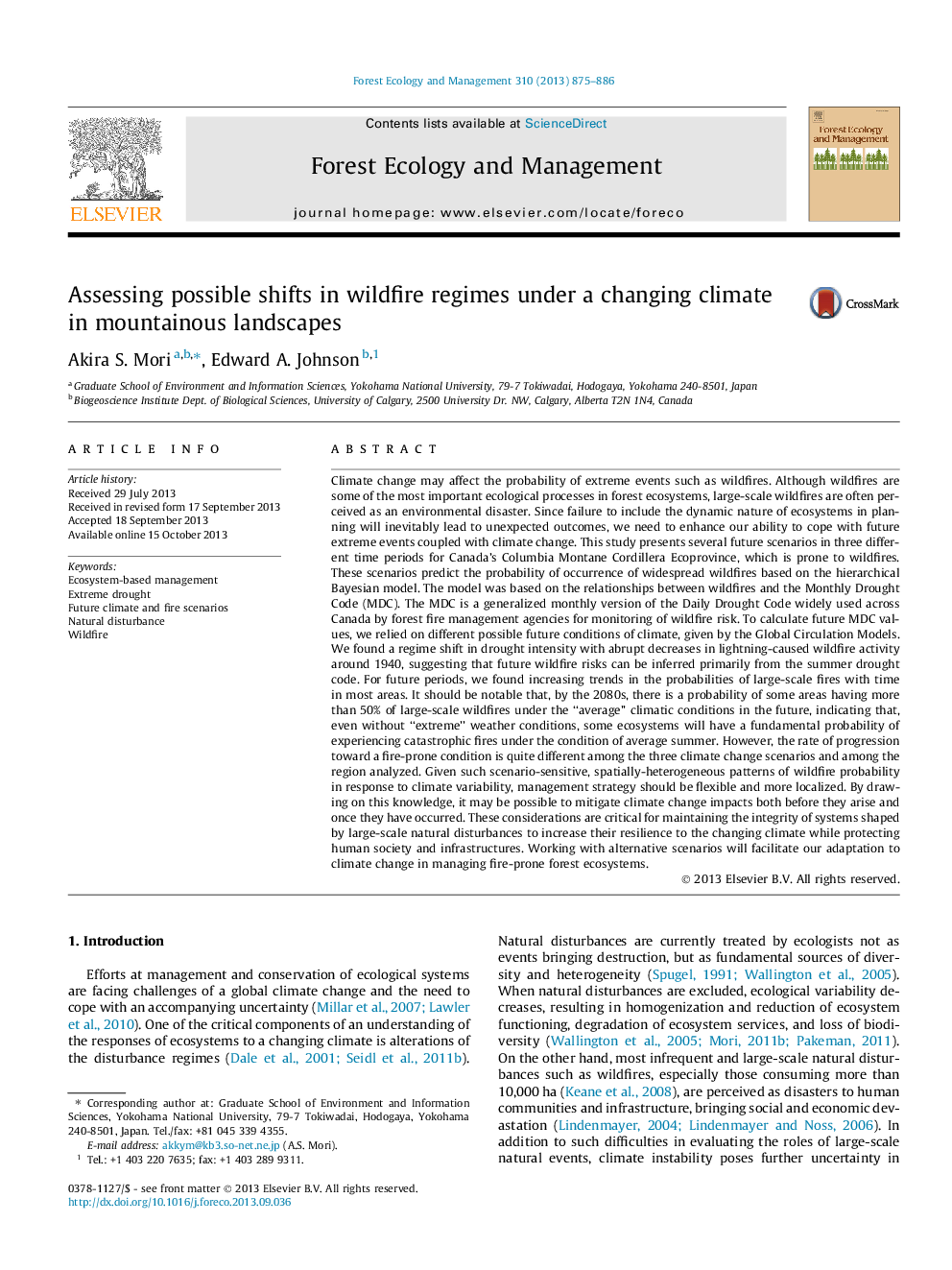| Article ID | Journal | Published Year | Pages | File Type |
|---|---|---|---|---|
| 6543900 | Forest Ecology and Management | 2013 | 12 Pages |
Abstract
Climate change may affect the probability of extreme events such as wildfires. Although wildfires are some of the most important ecological processes in forest ecosystems, large-scale wildfires are often perceived as an environmental disaster. Since failure to include the dynamic nature of ecosystems in planning will inevitably lead to unexpected outcomes, we need to enhance our ability to cope with future extreme events coupled with climate change. This study presents several future scenarios in three different time periods for Canada's Columbia Montane Cordillera Ecoprovince, which is prone to wildfires. These scenarios predict the probability of occurrence of widespread wildfires based on the hierarchical Bayesian model. The model was based on the relationships between wildfires and the Monthly Drought Code (MDC). The MDC is a generalized monthly version of the Daily Drought Code widely used across Canada by forest fire management agencies for monitoring of wildfire risk. To calculate future MDC values, we relied on different possible future conditions of climate, given by the Global Circulation Models. We found a regime shift in drought intensity with abrupt decreases in lightning-caused wildfire activity around 1940, suggesting that future wildfire risks can be inferred primarily from the summer drought code. For future periods, we found increasing trends in the probabilities of large-scale fires with time in most areas. It should be notable that, by the 2080s, there is a probability of some areas having more than 50% of large-scale wildfires under the “average” climatic conditions in the future, indicating that, even without “extreme” weather conditions, some ecosystems will have a fundamental probability of experiencing catastrophic fires under the condition of average summer. However, the rate of progression toward a fire-prone condition is quite different among the three climate change scenarios and among the region analyzed. Given such scenario-sensitive, spatially-heterogeneous patterns of wildfire probability in response to climate variability, management strategy should be flexible and more localized. By drawing on this knowledge, it may be possible to mitigate climate change impacts both before they arise and once they have occurred. These considerations are critical for maintaining the integrity of systems shaped by large-scale natural disturbances to increase their resilience to the changing climate while protecting human society and infrastructures. Working with alternative scenarios will facilitate our adaptation to climate change in managing fire-prone forest ecosystems.
Related Topics
Life Sciences
Agricultural and Biological Sciences
Ecology, Evolution, Behavior and Systematics
Authors
Akira S. Mori, Edward A. Johnson,
